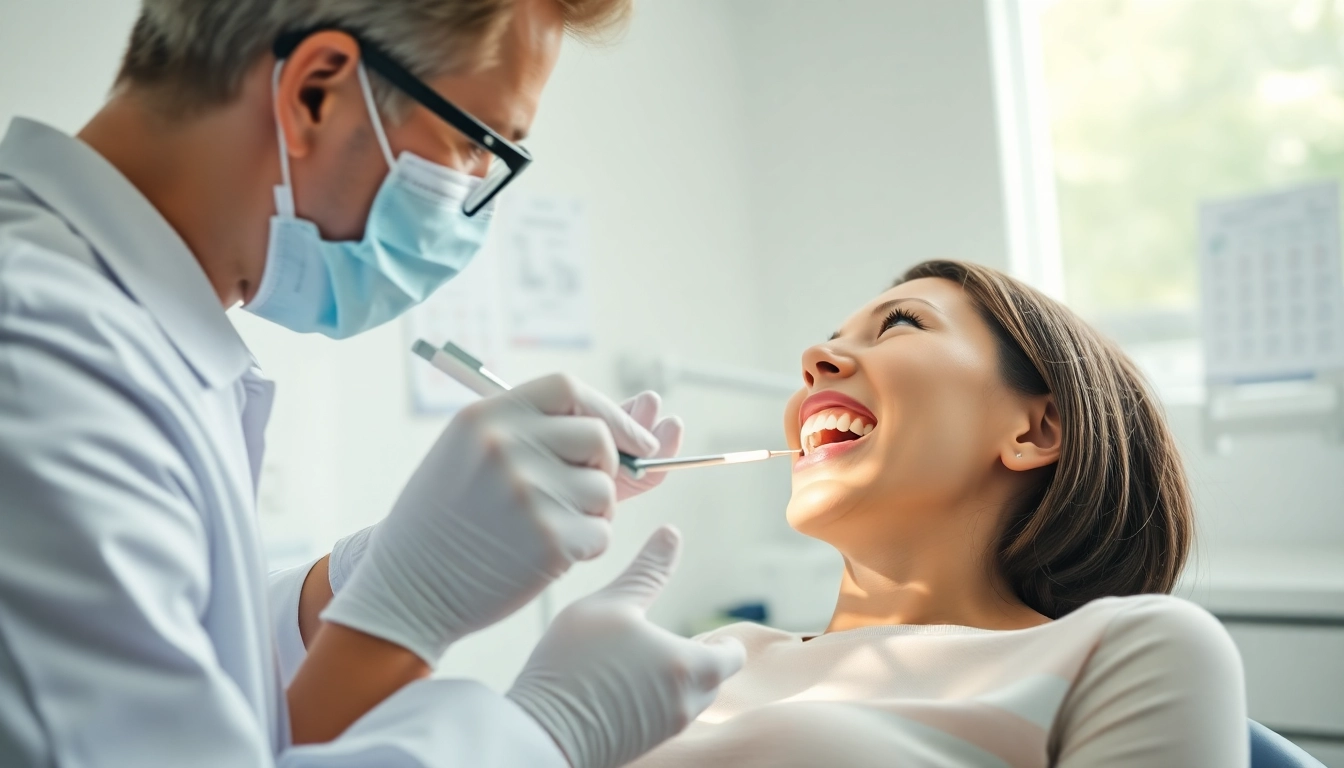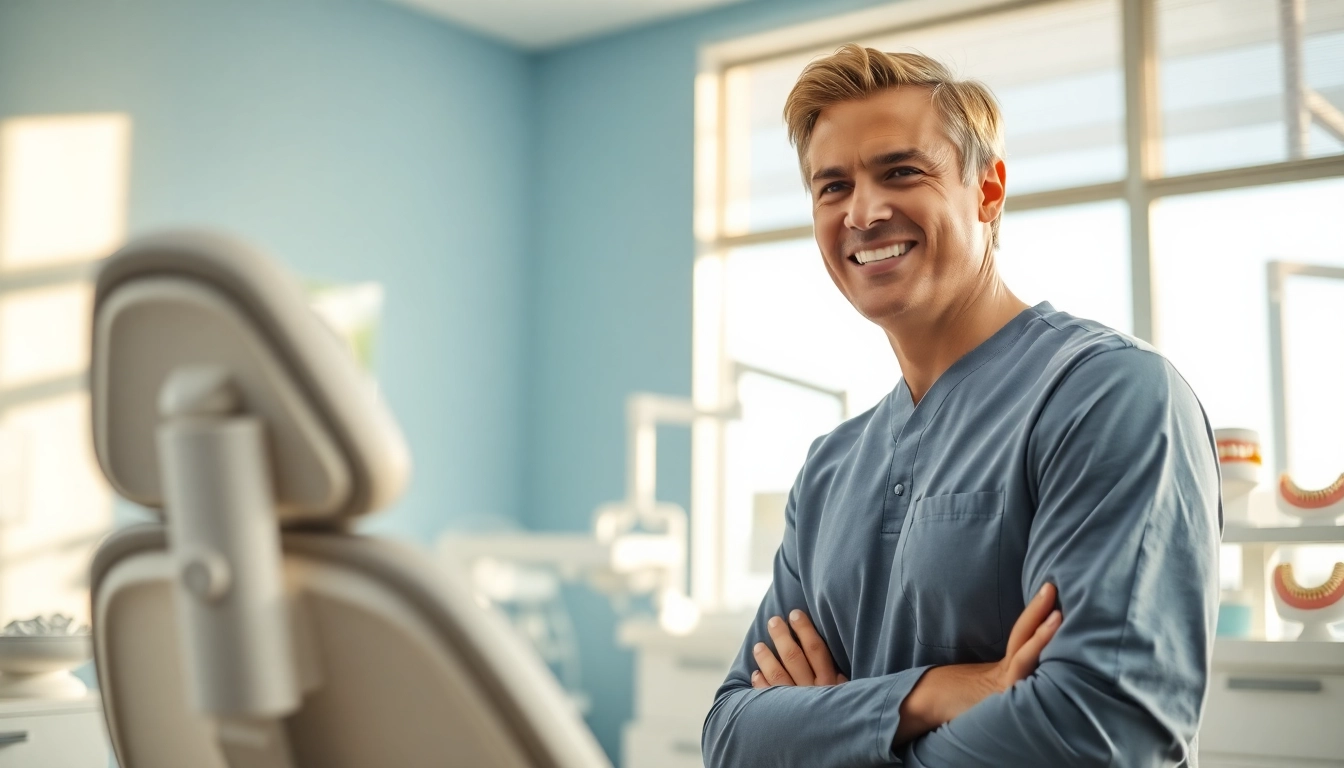Understanding Orthodontics and Its Importance
What is Orthodontics?
Orthodontics is a specialized branch of dentistry that focuses on diagnosing, preventing, and treating dental and facial irregularities. It encompasses a variety of treatments aimed at correcting misaligned teeth, jaws, and other related structures. Orthodontists utilize various tools and techniques to achieve desired outcomes, with braces and aligners being among the most popular. As part of a comprehensive approach to dental care, orthodontics provides not only aesthetic enhancements but also critical functional improvements that can have far-reaching implications for an individual’s overall health.
Benefits of Orthodontic Treatment
The benefits of orthodontic treatment extend beyond just a radiant smile. Here are some compelling reasons to consider orthodontics:
- Improved Dental Health: Straightening misaligned teeth makes it easier to maintain oral hygiene, reducing the risk of cavities and other dental issues.
- Enhanced Aesthetics: A well-aligned smile can boost self-esteem and confidence, positively impacting personal and professional interactions.
- Better Functionality: Orthodontics can improve bite alignment, resulting in better chewing and speaking abilities.
- Long-Term Cost Savings: Investing in orthodontic treatment can prevent future dental problems that may necessitate expensive corrective procedures.
Who Should Consider Orthodontics?
Orthodontic care is often associated with adolescents and teenagers, but it’s increasingly recognized that individuals of all ages can benefit from treatment. Adults seeking to enhance their smiles or correct longstanding bite issues are becoming common clientele in orthodontic practices. Early intervention is also vital; children should have their first orthodontic evaluation by age seven to identify any developing problems. Recognizing and addressing orthodontic issues at an early stage can lead to simpler treatment options and better results.
Services Provided by Grand Strand Smile Spotlight
Types of Treatments Available
The Grand Strand Smile Spotlight offers a comprehensive range of orthodontic services tailored to meet the unique needs of every patient. Services include:
- Traditional Metal Braces: These are commonly used for patients of all ages and are highly effective in treating a variety of alignment issues.
- Ceramic Braces: Made from clear materials, ceramic braces are a discreet alternative to metal braces.
- Lingual Braces: Placed on the back of the teeth, lingual braces are hidden from view, making them an attractive option for adults.
- Invisalign: This innovative treatment utilizes clear plastic aligners that are virtually invisible and can be removed for eating and cleaning purposes.
- Retainers: After braces or clear aligners, retainers help maintain teeth in their new positions.
Braces vs. Invisalign: Making the Right Choice
Deciding between braces and Invisalign largely depends on individual preferences and the specific dental issues that need to be addressed. Traditional braces are fixed devices that can correct complex dental issues and are often more suitable for severe alignment problems. In contrast, Invisalign aligners provide greater comfort and flexibility, making them ideal for those with mild to moderate orthodontic needs who prioritize aesthetic considerations. Consulting with an orthodontic specialist can help determine the most appropriate treatment approach based on personal lifestyle, comfort level with dental devices, and treatment goals.
Cost Considerations and Insurance Options
The financial aspect of orthodontic treatment is a major consideration for many patients. The cost of treatment can vary widely based on the type and duration of the service required. On average, traditional braces may range from a few thousand dollars to over ten thousand, while Invisalign can be similar in price or slightly higher due to its advanced technology. Many dental insurance plans offer orthodontic coverage, and flexible payment plans are often available through orthodontic offices. It’s essential for patients to discuss financial options early in the process to better understand their commitments and potential out-of-pocket costs. For more detailed guidance on pricing and insurance, you can refer to the Grand Strand Smile Spotlight.
The Orthodontic Journey: What to Expect
Initial Consultation and Assessment
The orthodontic journey begins with an initial consultation, where the orthodontist evaluates the patient’s dental condition. This typically involves X-rays, photographs, and impressions of the teeth to create a comprehensive treatment plan. This step also includes a discussion about the patient’s goals, which helps shape the approach to treatment. It’s essential for patients to ask questions and express any concerns they have during this initial assessment to ensure that they are fully informed about their options.
Stages of Treatment Explained
Once a treatment plan is established, patients will undergo various stages throughout their orthodontic journey. These stages typically include:
- Application of Braces/Aligners: For braces, the orthodontist will bond brackets to each tooth and thread a wire through them.
- Regular Adjustments: Patients will return periodically for adjustments, where the orthodontist will make minor changes to the braces or replace aligners.
- Monitoring Progress: Ongoing assessments will help determine if treatment is progressing as planned. Adjustments may also be made to the treatment schedule based on the results.
- Completion of Treatment: Once the desired outcome is achieved, braces or aligners are removed, and the patient enters the retention phase.
Post-treatment Care and Maintenance
After the removal of braces or completion of Invisalign treatment, patients typically need to wear a retainer to maintain their smile’s new alignment. It’s essential to follow the orthodontist’s instructions regarding retainer use and care to prevent teeth from shifting back to their original positions. Regular follow-up visits may also be required to ensure that the results are stable and satisfactory.
Expert Tips for a Successful Orthodontic Experience
Managing Discomfort During Treatment
Discomfort during orthodontic treatment is common, particularly after adjustments. Patients can manage discomfort by taking over-the-counter pain relief medications, applying a cold compress to the face, or using orthodontic wax to prevent irritation from braces. Additionally, sticking to softer foods immediately following adjustments can help minimize discomfort.
Maintaining Oral Hygiene with Orthodontics
Maintaining impeccable oral hygiene is crucial during orthodontic treatment to prevent plaque buildup and subsequent tooth decay. Patients should brush their teeth after every meal and use interdental brushes or floss threaders designed for braces to ensure that all areas around brackets and wires are cleaned effectively. Regular dental check-ups during treatment are also essential to monitor oral health.
Adjusting to Lifestyle Changes
Having braces or aligners can require some lifestyle adjustments. Patients may need to modify their diets, avoiding sticky, hard, or sugary foods that could damage braces or lead to cavities. It’s also wise to be mindful of social situations that may make wearing retainers or being uncomfortable with braces more challenging. Support from family and friends can make adjusting to these changes much more manageable.
Success Stories: Transforming Smiles in the Community
Real Patient Testimonials
Many patients have shared their positive experiences with orthodontic treatment, highlighting the transformative impact of their new smiles on their lives. Testimonials often focus on the improved confidence and self-esteem that come from having straight teeth, as well as the enhanced social interactions that result from feeling better about one’s appearance. Listening to these stories can provide encouragement and reassurance for prospective patients considering treatment.
Before-and-After Smile Transformations
One of the most compelling aspects of orthodontic treatment is witnessing the astounding before-and-after results. These transformations are evidence of the effective treatment plans and dedicated care provided by orthodontists. Many patients have reported remarkable changes in their facial structure and overall appearance, reinforcing how impactful orthodontics can be.
Community Impact and Outreach Programs
Myrtle Beach and surrounding areas benefit from community outreach programs that aim to educate and inform residents about the importance of oral health. Through workshops, school presentations, and local events, these programs raise awareness about orthodontics, emphasizing the accessibility of services and the positive effects on overall well-being. Community engagement not only helps foster trust in orthodontic practices but also empowers individuals to take charge of their dental health.














Leave a Reply